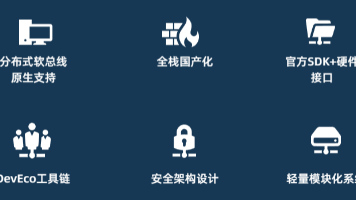深入剖析Seata:分布式事务的Java实践与原理探索
Seata 是一个由蚂蚁集团和阿里巴巴联合开源的分布式事务框架,最初名为 Fescar(Fast & Easy Commit And Rollback),后更名为 Seata,寓意“简单可扩展的自治事务架构”。它旨在为微服务架构下的分布式系统提供高效、一致的分布式事务支持。Seata 于 2019 年正式开源,目前由 Apache 基金会孵化,已成为分布式事务领域的标杆工具。Seata 的核心目标
在微服务架构日益流行的今天,分布式事务的管理成为Java开发者绕不开的技术难题。Seata(Simple Extensible Autonomous Transaction Architecture)作为一款开源的分布式事务解决方案,以其高性能、易用性和灵活性在业界广受好评。本文将从Seata的基本概念出发,深入探讨其核心原理、四种事务模式(AT、TCC、Saga、XA)的实现机制,并结合Java代码展示一个基于AT模式的实践案例。
一、Seata的基本概念
1. 什么是Seata?
Seata 是一个由蚂蚁集团和阿里巴巴联合开源的分布式事务框架,最初名为 Fescar(Fast & Easy Commit And Rollback),后更名为 Seata,寓意“简单可扩展的自治事务架构”。它旨在为微服务架构下的分布式系统提供高效、一致的分布式事务支持。Seata 于 2019 年正式开源,目前由 Apache 基金会孵化,已成为分布式事务领域的标杆工具。
Seata 的核心目标是通过非侵入式设计,解决微服务系统中跨服务、跨数据库的数据一致性问题。它支持四种事务模式:AT(Automatic Transaction)、TCC(Try-Confirm-Cancel)、Saga 和 XA,覆盖了从高性能到强一致性的多种场景。
2. 分布式事务的背景
在单体架构中,事务通常通过数据库的本地事务(如 MySQL 的 ACID 事务)保证数据一致性。然而,微服务架构将应用拆分为多个独立服务,每个服务可能使用独立的数据库,传统本地事务无法跨服务协调。这时,分布式事务应运而生,其核心需求是确保多个服务操作要么全部成功,要么全部回滚。
Seata 的设计基于两阶段提交(2PC)的思想,但通过优化避免了传统 2PC 的性能瓶颈和侵入性问题。它将分布式事务分为全局事务(Global Transaction)和分支事务(Branch Transaction),通过三个核心角色协作完成:
- TC(Transaction Coordinator):事务协调者,负责管理全局事务状态,驱动提交或回滚。
- TM(Transaction Manager):事务管理器,定义全局事务边界,发起事务的开始、提交或回滚。
- RM(Resource Manager):资源管理器,管理分支事务,负责注册、执行和报告事务状态。
3. Seata的核心优势
- 非侵入性:对业务代码改动最小,尤其是 AT 模式,几乎无需额外编码。
- 高性能:通过异步化和本地事务提交优化,减少锁持有时间。
- 多模式支持:提供 AT、TCC、Saga、XA 四种模式,满足不同场景需求。
- 生态兼容:支持 Spring Cloud、Dubbo 等主流微服务框架,以及 MySQL、PostgreSQL 等多种数据库。
二、Seata的四种事务模式
Seata 的灵活性体现在其支持的四种事务模式,每种模式针对不同的业务场景和一致性要求。
1. AT模式(Automatic Transaction)
- 原理:AT 模式是 Seata 的默认模式,基于数据库本地事务,通过代理数据源自动生成回滚日志(Undo Log),实现事务的自动提交和回滚。
- 流程:
- 一阶段:执行业务 SQL 和生成 Undo Log,在本地事务中提交。
- 二阶段:若全局事务提交,异步删除 Undo Log;若回滚,根据 Undo Log 自动恢复数据。
- 优点:对业务无侵入,性能较高,适合大多数场景。
- 局限:依赖数据库支持本地事务,Undo Log 增加存储开销。
2. TCC模式(Try-Confirm-Cancel)
- 原理:TCC 是一种补偿型事务模式,将事务分为 Try(预留资源)、Confirm(确认提交)和 Cancel(取消回滚)三个阶段,由业务代码手动实现。
- 流程:
- Try:检查并预留资源。
- Confirm:执行实际业务逻辑。
- Cancel:若失败,释放资源并回滚。
- 优点:不依赖数据库事务,支持跨数据库和非关系型数据源,灵活性高。
- 局限:需要手动实现三阶段逻辑,开发成本较高,需保证幂等性。
3. Saga模式
- 原理:Saga 模式适用于长事务,将分布式事务拆分为多个本地事务,每个事务配有补偿操作(Compensation),通过正向执行和逆向回滚保证一致性。
- 流程:
- 正向执行:依次执行每个本地事务。
- 补偿回滚:若某步失败,执行前序事务的补偿操作。
- 优点:适合复杂流程和长事务,无锁设计,性能较高。
- 局限:补偿逻辑复杂,需业务开发者实现。
4. XA模式
- 原理:XA 模式基于 XA 协议(两阶段提交),利用数据库的 XA 事务支持实现分布式事务。
- 流程:
- 一阶段(Prepare):各分支事务准备并锁定资源。
- 二阶段(Commit/Rollback):提交或回滚所有分支事务。
- 优点:强一致性,依赖数据库原生支持。
- 局限:性能较低,锁持有时间长,不适合高并发场景。
三、Seata的工作原理
Seata 的核心机制围绕全局事务和分支事务的协调展开,以下从架构和流程角度深入剖析。
1. 架构组成
- TC 服务端:独立部署的事务协调者,记录全局事务和分支事务的状态,通常使用文件或数据库存储。
- TM 和 RM 客户端:集成在业务应用中,通过代理数据源或拦截器与 TC 通信。
- XID(全局事务ID):贯穿整个事务生命周期的唯一标识,用于关联全局事务和分支事务。
2. AT模式的工作流程
以 AT 模式为例,详细说明 Seata 的执行过程:
- 事务开启:TM 调用 TC 发起全局事务,生成 XID。
- 分支注册:RM 执行本地事务前,向 TC 注册分支事务,将 XID 与分支关联。
- 一阶段提交:RM 执行业务 SQL,生成 Undo Log(记录修改前后的数据),在本地事务中提交。
- 状态上报:RM 报告分支事务状态给 TC。
- 二阶段处理:
- 若全局提交,TC 通知 RM 异步删除 Undo Log。
- 若全局回滚,TC 通知 RM 根据 Undo Log 回滚数据。
3. 关键技术点
- 数据源代理:Seata 通过代理 JDBC 数据源,拦截 SQL 执行,插入 Undo Log。
- 全局锁:AT 模式使用全局锁确保写隔离,防止并发修改。
- 异步化:二阶段提交异步执行,减少锁持有时间。
- 状态存储:TC 支持文件模式(单机高性能)和数据库模式(集群共享)。
四、Java实践:基于Seata AT模式的订单系统
以下通过一个简单的订单-库存-账户扣款场景,展示如何在 Spring Boot 中集成 Seata AT 模式。
1. 场景设计
- 服务:
- 订单服务(Order Service):创建订单。
- 库存服务(Stock Service):扣减库存。
- 账户服务(Account Service):扣减余额。
- 需求:用户下单时,需确保订单创建、库存扣减和余额扣减要么全部成功,要么全部回滚。
2. 环境准备
- 数据库:MySQL 8.0,创建三个库:
order_db、stock_db、account_db。 - 表结构:
-- order_db.order_table
CREATE TABLE order_table (
id BIGINT PRIMARY KEY AUTO_INCREMENT,
user_id VARCHAR(50),
product_id VARCHAR(50),
amount DECIMAL(10,2),
status INT DEFAULT 0
);
-- stock_db.stock_table
CREATE TABLE stock_table (
id BIGINT PRIMARY KEY AUTO_INCREMENT,
product_id VARCHAR(50),
stock INT
);
-- account_db.account_table
CREATE TABLE account_table (
id BIGINT PRIMARY KEY AUTO_INCREMENT,
user_id VARCHAR(50),
balance DECIMAL(10,2)
);
-- Undo Log 表(每个库都需要)
CREATE TABLE undo_log (
id BIGINT PRIMARY KEY AUTO_INCREMENT,
branch_id BIGINT NOT NULL,
xid VARCHAR(100) NOT NULL,
context VARCHAR(128) NOT NULL,
rollback_info LONGBLOB NOT NULL,
log_status INT NOT NULL,
log_created DATETIME NOT NULL,
log_modified DATETIME NOT NULL,
UNIQUE KEY ux_undo_log (xid, branch_id)
) ENGINE=InnoDB DEFAULT CHARSET=utf8;
- 依赖(
pom.xml):
<dependencies>
<dependency>
<groupId>org.springframework.boot</groupId>
<artifactId>spring-boot-starter-web</artifactId>
</dependency>
<dependency>
<groupId>com.alibaba.cloud</groupId>
<artifactId>spring-cloud-starter-alibaba-seata</artifactId>
<version>2022.0.0.0</version>
</dependency>
<dependency>
<groupId>org.mybatis.spring.boot</groupId>
<artifactId>mybatis-spring-boot-starter</artifactId>
<version>2.2.2</version>
</dependency>
<dependency>
<groupId>mysql</groupId>
<artifactId>mysql-connector-java</artifactId>
</dependency>
</dependencies>
3. Seata Server 配置
- 下载 Seata Server(版本 1.4.2):https://github.com/seata/seata/releases。
- 修改
conf/file.conf:store { mode = "db" db { datasource = "druid" dbType = "mysql" driverClassName = "com.mysql.cj.jdbc.Driver" url = "jdbc:mysql://localhost:3306/seata?useSSL=false" user = "root" password = "password" } } - 修改
conf/registry.conf:registry { type = "file" } config { type = "file" } - 创建 TC 数据库表(参考 Seata 官方文档)并启动 Seata Server。
4. 订单服务
配置文件(application.yml):
server:
port: 8081
spring:
datasource:
url: jdbc:mysql://localhost:3306/order_db?useSSL=false
username: root
password: password
driver-class-name: com.mysql.cj.jdbc.Driver
application:
name: order-service
seata:
tx-service-group: my_tx_group
service:
vgroup-mapping:
my_tx_group: default
grouplist:
default: 127.0.0.1:8091
实体类:
public class Order {
private Long id;
private String userId;
private String productId;
private BigDecimal amount;
private Integer status;
// Getters and Setters
}
Mapper:
@Mapper
public interface OrderMapper {
@Insert("INSERT INTO order_table(user_id, product_id, amount, status) VALUES(#{userId}, #{productId}, #{amount}, #{status})")
void createOrder(Order order);
}
服务层:
@Service
public class OrderService {
@Autowired
private OrderMapper orderMapper;
@Autowired
private StockClient stockClient;
@Autowired
private AccountClient accountClient;
@GlobalTransactional(name = "create-order", rollbackFor = Exception.class)
public void createOrder(String userId, String productId, BigDecimal amount) {
// 创建订单
Order order = new Order();
order.setUserId(userId);
order.setProductId(productId);
order.setAmount(amount);
order.setStatus(1);
orderMapper.createOrder(order);
// 扣减库存
stockClient.deductStock(productId, 1);
// 扣减余额
accountClient.deductBalance(userId, amount);
// 模拟异常
if ("error".equals(userId)) {
throw new RuntimeException("Simulated failure");
}
}
}
Controller:
@RestController
@RequestMapping("/order")
public class OrderController {
@Autowired
private OrderService orderService;
@PostMapping("/create")
public String createOrder(@RequestParam String userId, @RequestParam String productId, @RequestParam BigDecimal amount) {
orderService.createOrder(userId, productId, amount);
return "Order created successfully";
}
}
5. 库存服务
配置文件(application.yml):
server:
port: 8082
spring:
datasource:
url: jdbc:mysql://localhost:3306/stock_db?useSSL=false
username: root
password: password
driver-class-name: com.mysql.cj.jdbc.Driver
application:
name: stock-service
seata:
tx-service-group: my_tx_group
service:
vgroup-mapping:
my_tx_group: default
grouplist:
default: 127.0.0.1:8091
Mapper:
@Mapper
public interface StockMapper {
@Update("UPDATE stock_table SET stock = stock - #{quantity} WHERE product_id = #{productId} AND stock >= #{quantity}")
int deductStock(@Param("productId") String productId, @Param("quantity") int quantity);
}
服务层:
@Service
public class StockService {
@Autowired
private StockMapper stockMapper;
@Transactional
public void deductStock(String productId, int quantity) {
int updated = stockMapper.deductStock(productId, quantity);
if (updated == 0) {
throw new RuntimeException("Insufficient stock");
}
}
}
Controller:
@RestController
@RequestMapping("/stock")
public class StockController {
@Autowired
private StockService stockService;
@PostMapping("/deduct")
public void deductStock(@RequestParam String productId, @RequestParam int quantity) {
stockService.deductStock(productId, quantity);
}
}
6. 账户服务
配置文件(application.yml):
server:
port: 8083
spring:
datasource:
url: jdbc:mysql://localhost:3306/account_db?useSSL=false
username: root
password: password
driver-class-name: com.mysql.cj.jdbc.Driver
application:
name: account-service
seata:
tx-service-group: my_tx_group
service:
vgroup-mapping:
my_tx_group: default
grouplist:
default: 127.0.0.1:8091
Mapper:
@Mapper
public interface AccountMapper {
@Update("UPDATE account_table SET balance = balance - #{amount} WHERE user_id = #{userId} AND balance >= #{amount}")
int deductBalance(@Param("userId") String userId, @Param("amount") BigDecimal amount);
}
服务层:
@Service
public class AccountService {
@Autowired
private AccountMapper accountMapper;
@Transactional
public void deductBalance(String userId, BigDecimal amount) {
int updated = accountMapper.deductBalance(userId, amount);
if (updated == 0) {
throw new RuntimeException("Insufficient balance");
}
}
}
Controller:
@RestController
@RequestMapping("/account")
public class AccountController {
@Autowired
private AccountService accountService;
@PostMapping("/deduct")
public void deductBalance(@RequestParam String userId, @RequestParam BigDecimal amount) {
accountService.deductBalance(userId, amount);
}
}
7. Feign 客户端
StockClient:
@FeignClient(name = "stock-service")
public interface StockClient {
@PostMapping("/stock/deduct")
void deductStock(@RequestParam("productId") String productId, @RequestParam("quantity") int quantity);
}
AccountClient:
@FeignClient(name = "account-service")
public interface AccountClient {
@PostMapping("/account/deduct")
void deductBalance(@RequestParam("userId") String userId, @RequestParam("amount") BigDecimal amount);
}
8. 测试
-
初始化数据:
stock_table:(id=1, product_id="P001", stock=10)account_table:(id=1, user_id="U001", balance=100.00)
-
成功场景:
- 请求:
POST http://localhost:8081/order/create?userId=U001&productId=P001&amount=50 - 结果:订单创建,库存减 1,余额减 50。
- 请求:
-
失败场景:
- 请求:
POST http://localhost:8081/order/create?userId=error&productId=P001&amount=50 - 结果:抛出异常,事务回滚,数据库数据不变。
- 请求:
五、Seata的优化与实践经验
1. 性能优化
- 异步提交:AT 模式的二阶段提交异步化,减少锁等待。
- 全局锁管理:通过 TC 集中管理全局锁,避免数据库锁冲突。
- 批量清理:定期清理 Undo Log,减少存储压力。
2. 配置调优
- 存储模式:生产环境推荐数据库模式,支持集群高可用。
- 超时设置:调整
seata.client.rm.lock.retry-times和seata.client.tm.commit-retry-count。
3. 异常处理
- 幂等性:TCC 和 Saga 模式需业务保证幂等性,避免重复执行。
- 悬挂问题:确保 Cancel 操作检查资源状态。
4. 注意事项
- 数据库支持:AT 和 XA 模式依赖数据库事务支持。
- 事务边界:合理定义
@GlobalTransactional的作用范围,避免嵌套事务。
六、Seata的局限与替代方案
1. 局限性
- AT 模式:Undo Log 增加存储和计算开销,不支持非关系型数据库。
- TCC 模式:开发复杂度高,需手动处理补偿逻辑。
- Saga 模式:补偿逻辑复杂,不适合强一致性需求。
- XA 模式:性能瓶颈明显,高并发下易阻塞。
2. 替代方案
- RocketMQ 事务消息:基于消息队列实现最终一致性。
- Spring Cloud Alibaba + Nacos:结合本地事务和补偿机制。
- ShardingSphere:支持分布式事务和分库分表。
七、总结
Seata 作为一款成熟的分布式事务框架,通过 AT、TCC、Saga 和 XA 四种模式,满足了微服务架构下多样化的数据一致性需求。其非侵入性设计和高性能优化使其成为 Java 开发者的首选工具。本文从 Seata 的基本概念、原理剖析到实践案例,全面展示了其应用价值。
更多推荐
 已为社区贡献1条内容
已为社区贡献1条内容








所有评论(0)